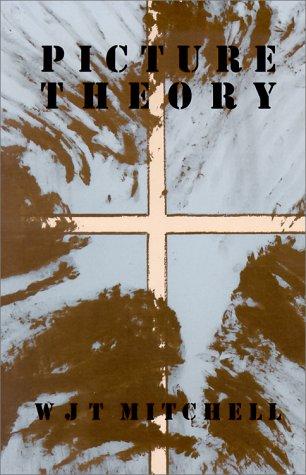W.J.T. Mitchell, Professor of Art at the University of Chicago, distinguishes a ‘pictorial turn’ in the human sciences and relates it to developments in Anglo-American and continental, post-structuralist philosophy.

What these shifts in intellectual and academic discourse have to do with each other, much less with everyday life and ordinary language is not especially self-evident. But it does seem clear that another shift in what philosophers talk about is happening, and that once again a complexly related transformation is occurring in other disciplines of the human sciences and in the sphere of public culture. I want to call this shift “the pictorial turn.” In Anglo-American philosophy, variations on this turn could be traced early on in Charles Peirce’s semiotics and later in Nelson Goodman’s “languages of art,” both of which explore the conventions and codes that underlie nonlinguistic symbol systems and (more important) do not begin with the assumption that language is paradigmatic for meaning. In Europe one might identify it with phenomenology’s inquiry into imagination and visual experience; or with Derrida’s “grammatology,” which de-centers the “phonocentric” model of language by shifting attention to the visible, material traces of writing; or with the Frankfurt School’s investigations of modernity, mass culture, and visual media; or with Michel Foucault’s insistence on a history and theory of power/knowledge that exposes the rift between the discursive and the “visible,” the seeable and the sayable, as the crucial fault-line in “scopic regimes” of modernity. Above all, I would locate the philosophical enactment of the pictorial turn in the thought of Ludwig Wittgenstein, particularly in the apparent paradox of a philosophical career that began with a “picture theory” of meaning and ended with the appearance of a kind of iconoclasm, a critique of imagery that led him to renounce his earlier pictorialism and say “A picture held us captive. And we could not get outside it, for it lay in our language and language seemed to repeat itself to us inexorably.” Rorty’s determination to “get the visual, and in particular the mirroring, metaphor out of our speech altogether” echoes Wittgenstein’s iconophobia and the general anxiety of linguistic philosophy about visual representation. This anxiety, this need to defend “our speech” against “the visual” is, I want to suggest, a sure sign that a pictorial turn is taking place.
I am not saying, of course, that all these different encounters with visual representation can be reduced to some single thesis or that all the anxieties about “the visual” come to the same thing. Rorty’s concern is to get philosophy over its infatuation with epistemology, and particularly its obsession with the model of the image as a figure of representational transparency and realism. For him, the “mirror” is the temptation to scientism and positivism. For the Frankfurt School, by contrast, the regime of the visual is associated with mass media and the threat of a culture of fascism. What makes for the sense of a pictorial turn, then, is not that we have some powerful account of visual representation that is dictating the terms of cultural theory, but that pictures form a point of peculiar friction and discomfort across a broad range of intellectual inquiry. The picture now has a status somewhere between what Thomas Kuhn called a “paradigm” and an “anomaly,” emerging as a central topic of discussion in the human sciences in the way that language did: that is, as a kind of model or figure for other things (including figuration itself), and as an unsolved problem, perhaps even the object of its own “science,” what Erwin Panofsky called an “iconology.” The simplest way to put this is to say that, in what is often characterized as an age of “spectacle” (Guy Debord), “surveillance” (Foucault), and all-pervasive image-making, we still do not know exactly what pictures are, what their relation to language is, how they operate on observers and on the world, how their history is to be understood, and what is to be done with or about them.
Mitchell, W.J.T. 1995. Picture Theory. Chicago: University of Chicago Press. pp. 11-13. || Amazon || WorldCat
